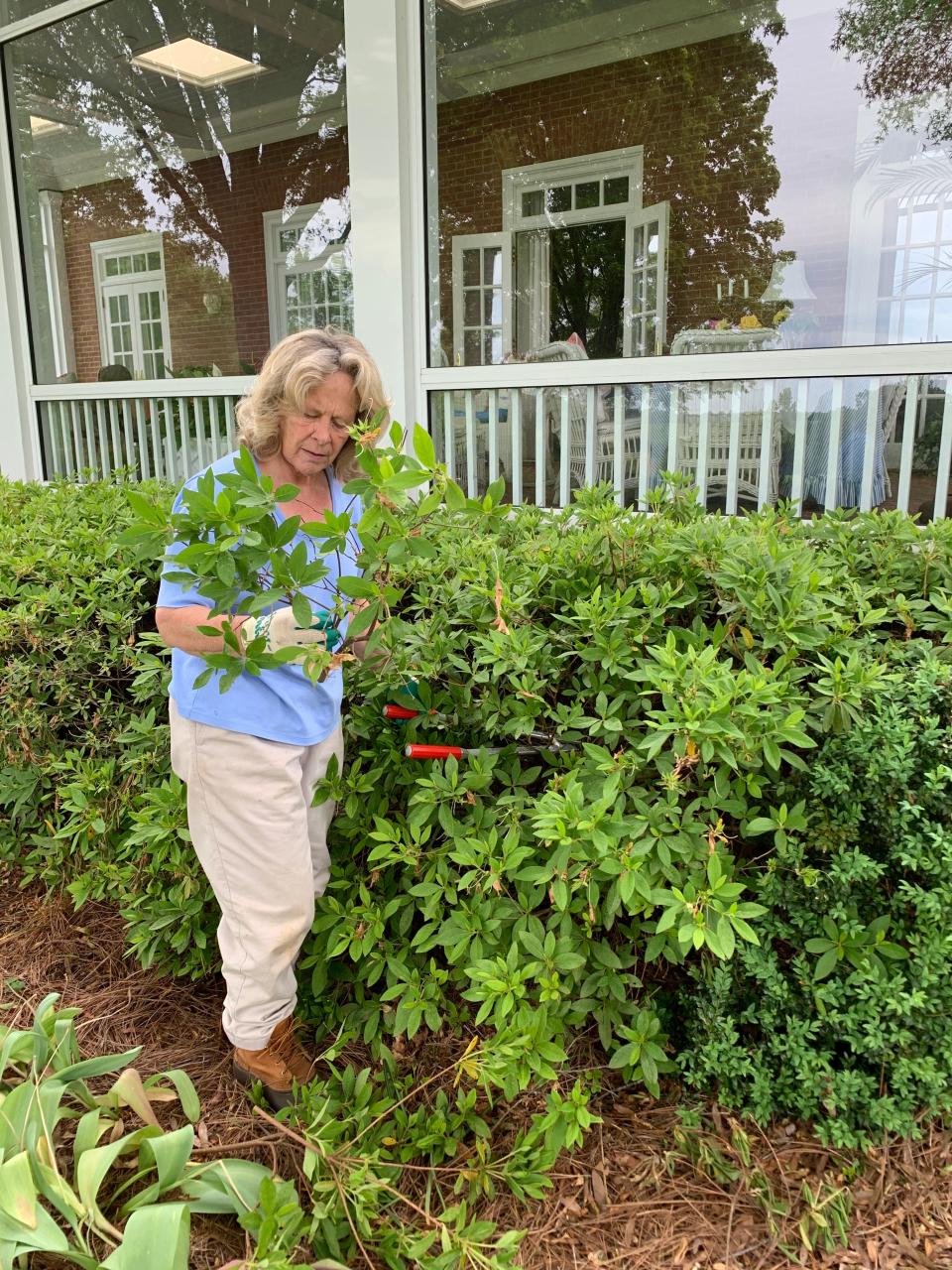Making the cut: Don't be scared to prune
Much has been written over the years about pruning, yet many people, including myself, are nervous about pruning. Pruning seems confusing to many of us gardeners. Yet, pruning is very helpful in maintaining the look we want in our gardens. We might need to control the size of a shrub or to remove dead limbs or to let air and light inside a particular plant.
Most shrubs do not need a lot of pruning, however, pruning shrubs is a confusing thing for many gardeners because some need a lot more pruning than others. When you do prune, shrubs are more plant specific than trees and a few general rules will help you make the right cuts.
If you are growing Camellias or Roses for a flower show or wanting particular shapes, that is different. Most shrubs need to be thinned, to have broken or dead limbs removed and odd branches that stick out in the wrong direction. Shrubs can use a little pruning here and there yearly to keep them from being an unruly beast, and some do not even need that.
Shearing a shrub (cutting off just the top branches) to shape the plant encourages surface branches. Too many surface branches can prohibit good air circulation inside the plant. Plants pruned into shapes will need to have some branches removed deep inside the plant in order to let air and light get inside the plant and to encourage inside growth. Boxwoods are a good example of a plant that is often pruned to a shape and that needs a few deep cuts inside from time to time. You might have a small opening when this is done but it will fill-in and you will never know you made the cut in a few weeks.

When pruning an evergreen shrub or hedge, be sure to have the lower branches wider than the upper branches. It is important for the lower branches to get some sunlight and if the upper branches come out farther than the lower branches, the upper branches can shade the lower branches. If the lower branches do not get sun, they will start dying out and you will have a bush with no lower branches.
Also, do not prune an evergreen shrub with needles too far or you might have limbs without needles. You cannot prune past the last branch of needles. Do not remove the lower limbs off of shrub with needles and expect it to grow back because it will not.
Prune flowering shrubs immediately after blooming is the best general rule for all plants that bloom.
Spring blooming plants should be pruned immediately after blooming in order to avoid removing the flower buds that develop for the following season. If you remember this, you will generally be on the safe side. These plants might need
thinning but usually they can be left to grow to their natural shape. Pruning forsythia and spirea into shapes is not natural and should be avoided.
Prune summer flowering shrubs in late winter is a general rule with the exception of gardenias and hydrangeas. The mophead or big leaf (macrophylla) and oakleaf (querifolia) hydrangeas should be pruned a little immediately after they bloom to encourage new growth. However, if these are pruned too late, you will be cutting off next year’s flower buds. Many summer-flowering shrubs bloom on new growth and pruning these in winter will encourage new growth and more flowers. Butterfly bushes (Buddlia), Caryopteris and Annabelle (arboresence) hydrangeas can be pruned to about 10 to 12 inches in late winter. If they are pruned heavily in the late summer or early fall, this could trigger new growth. This new growth would not have time to ‘harden off’ before frost and the new growth could be killed, killing the bush.
You cannot be general with hydrangeas. Of the 98 different kinds of hydrangeas, there are 4 that are grown in our area and these have different rules about pruning. First, you have to know which kind of hydrangea you have in your garden. Are they the ones that can be pink or blue or are they the “Limelight” type.
When I am asked about pruning hydrangeas, most people want to know about the French, Bigleaf or mophead (macrophylla) hydrangeas. I have read that you can prune up to September. I personally find this is not the case with all mopheads. Some of my mopheads bloom in early summer and others bloom in late July and even early August. Waiting until later summer can be too late to prune the early blooming ones if you are taking them down in height and want blooms the following summer. You need to prune mophead hydrangeas just after they bloom. Plus you cannot dramatically prune mophead hydrangeas and expect blooms the following year. The newer varieties that bloom on new wood are different. The Endless summer series and other new varieties bloom on new wood and they follow different rules.
One if the biggest mistakes with hydrangeas is they are planted in the wrong spot. If the bush is too tall for a spot, like covering a window, then move the bush to another location. Most mophead or big leaf hydrangeas grow to about six feet tall in eight years and many times these plants are just in the wrong location. In most cases, people need to ‘bite the bullet’ and move the hydrangea that is too tall for the location to another spot. Some of the newer hydrangeas that are rebloomers, this is the exception.
Betty Montgomery is a master gardener and author of “Hydrangeas: How To Grow, Cultivate & Enjoy,” and “A Four-Season Southern Garden.” She can be reached at bmontgomery40@gmail.com.

This article originally appeared on The Fayetteville Observer: Pruning helps maintaining the look we want in our gardens.

